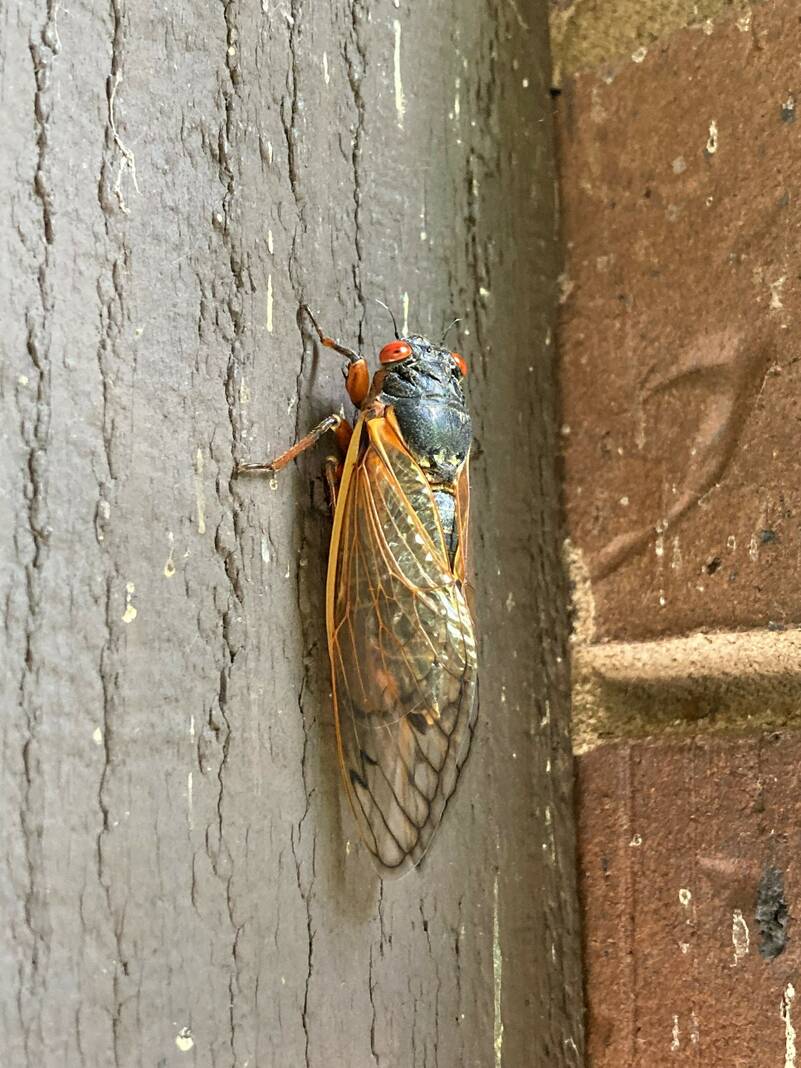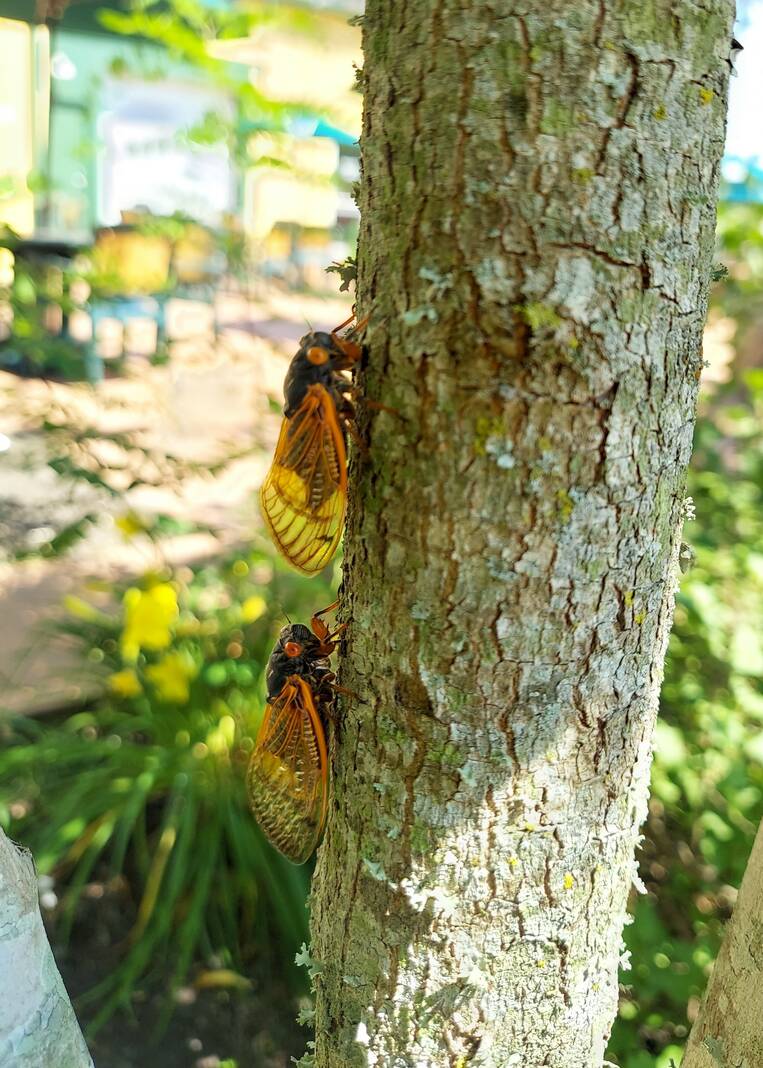
Periodical Cicadas are known for their black and orange coloring, while the Annual Cicadas are green.

Female cicadas can differentiate between males in different subspecies based on the sounds they make. That is how they know which males to mate with.
The periodical cicadas are all but gone and Brown County missed them. The big “dual brood” or cicada boom was a dud, with the closest place to them overlapping being in Springfield Ill., according to Cicada Mania.
Broods 13 and 19 have finished emerging and are finishing off their life cycles of mating and laying eggs before they die back for the year.
Periodical Cicada broods 13 and 19 were expected to overlap in June in Indiana and its surrounding states, but State Entomologist with the Department of Natural Resources Megan Abraham said that they each barely made it into their respective parts of the state.
“What we heard was two populations in broods coming together, they combine every 200 years,” Abrahams said. “Because one was a 17-year and one was a 13-year, they only come out at the same time every 200 years. We really only know where they are expected to appear based on historical data. The one in Chicagoland and Illinois (Brood 13) touched northern Indiana near the Chicagoland area. The great southern brood (Brood 19) reached Kentucky and Tennessee but only reached Evansville in Indiana. They definitely didn’t overlap for us.”
They typically emerge in May but have been known to emerge in late April or early June. It all depends on the weather, Cicada Mania said. Strong rains can also coax their emergence.
Cicadas emerge from holes in the ground by the base of trees. They also build turrets or chimneys above the holes they will emerge from. The holes are around the diameter of a finger and people can expect cicadas to appear from that area.
“They tend to stick around the same areas,” Abraham said. “The main function is that they come out with enough time in between to protect them from predators. They make sure they do not come out often enough to be expected and turned into food.”
Cicadas are not strong fliers and do not travel long distances.
“Because they don’t fly well, and they cue in on their species they spread based on what’s going on in different areas and don’t move too far off from their population,” Abraham said. “For example, if we have a specific brood in Tennessee, we would not see them in Indiana, but if there was a brood in northern Kentucky, we could expect to see a few in Southern Indiana. If your subdivision was not there 17 years ago, you most likely won’t see these guys. If your house is built on property that was a corn field 17-years ago, you won’t see them. We see them in areas historically kept in state parks or forested areas.”
Abraham said not to worry, Indiana will still see cicada species throughout the rest of 2024.
Male cicadas are known for their singing. It is how female cicadas differentiate their specific species from the others.
“We will have annual cicadas everywhere, they are the green ones,” Abraham said. “Those come out in August and more towards the fall. Enjoy them while you have them. They’re a staple of Indiana summers. They aren’t dangerous and cannot hurt people. They’re annoying at times, but can be a good sign that the state fair is coming along with fun summer activities.”
More information on cicadas and where to expect them can be found on www.cicadamania.com/.

